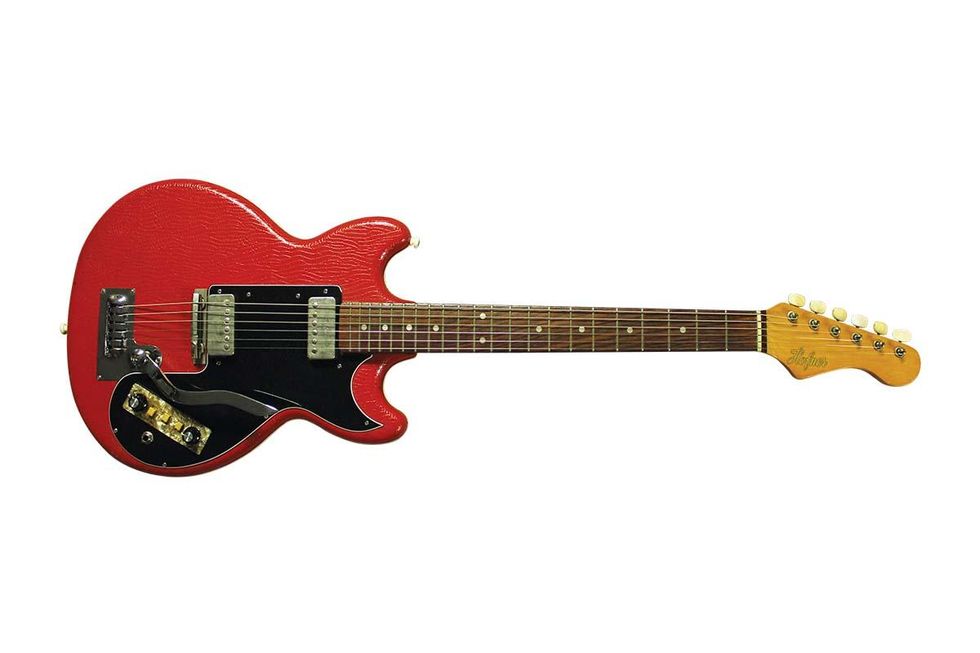
I’m probably late to the game for most of you, but I finally got around to watching Get Back, Peter Jackson’s excellent Beatles documentary. Throughout the doc, I was keeping an eye out for interesting guitars (like George Harrison’s Fender Telecaster made almost entirely of rosewood) but was dwelling quite a bit on Paul McCartney’s Höfner 500/1 Violin Bass. The German-based Höfner Company made a lefty Violin Bass for McCartney back in 1961, while the Beatles were playing regularly in and around Hamburg. I found it so interesting that McCartney continued to favor the guitar, even though the band could afford and play just about any instrument available during that time. In fact, in those early Hamburg days, Harrison played a Höfner President and then a Club 40, which John Lennon also played. Even Stuart Sutcliffe had a Höfner 500/5.
In the USA, Höfner never seemed to make a great impression on the guitar market. I guess most people only know about the Violin Bass, but Höfner has a long tradition of esteemed instrument production. Höfner has been around since the late 1880s, primarily making violins, then eventually acoustic guitars and electric guitars, starting in the 1930s. In the early 1960s, Höfner electric guitar production was ramping up, perfectly coinciding with the guitar boom and the rise of the Beatles.
There are plenty of good catalogs from the era (mainly because of the British importer, Selmer London), and the Höfner guitar lineup was quite impressive. The large and rather regal looking hollowbodies were plentiful, and there were some super cool solidbodies, like the Futurama models, which are rather rare today. But the most common and budget-friendly guitars in the catalogs were the Coloramas. This line started around 1958 and continued through 1965—while undergoing several version changes.
In the early 1960s, Höfner electric guitar production was ramping up, perfectly coinciding with the guitar boom and the rise of the Beatles.
I owned a few Coloramas that were from the quirkiest era. They piqued my interest because they were finished with colored vinyl with white piping stretched around a laminate solid-wood body. The vinyl finish quickens guitar production, as it removes the painting, drying, and buffing process. And what does it do to the tone? Who cares! My examples dated back to the 1962 to ’63 era, and both had a very smooth tremolo unit that was integrated into the body. The unit was paired with a simple nickel-plated steel bridge that only allowed for vertical adjustment.
The electronics on the Colorama consist of Höfner “Diamond Logo” single-coils and Höfner’s “Flick Action” console, which had two volume knobs, a bass switch for the neck pickup, a treble switch for the bridge pickup, and a rhythm/solo switch which further enhanced its tone. This was standard fare for many of the electric Höfner guitars. The slim “Slendaneck” profile featured a fully adjustable truss rod inside. The bodies have symmetrical double cutaways and feel just fine when strapped up—not too heavy or light. These guitars came with relatively good frets and tuners for their class. All in all, these were a real bargain for guitar players around the world.
As the ’60s moved along and the guitar boom began to wane, Japanese guitar manufacturers simply flooded the market with even more affordable electrics, and Höfner lost its foothold on the U.S. market. They continued to produce amazing guitars, and some of these can be real finds today. Most of their guitars were built really well, and they’ve always had a good reputation. But, if it wasn’t for the Beatles and McCartney’s Violin Bass, we may never have heard of this historic company.
From Your Site Articles
Related Articles Around the Web









